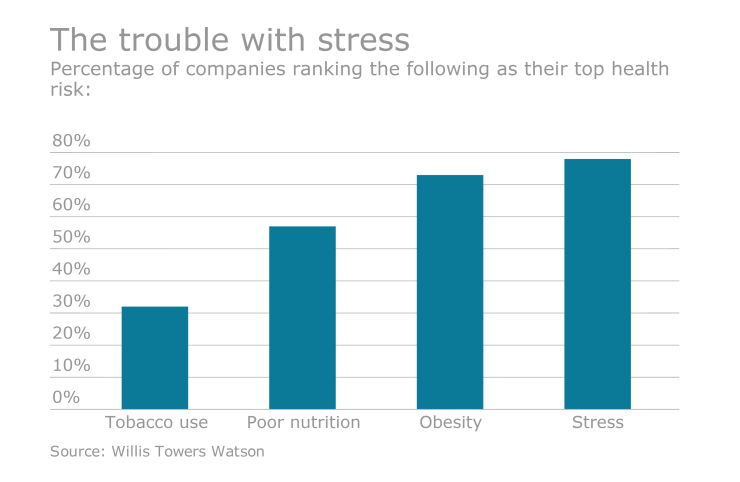As mental health issues become a more prevalent problem in the workplace, employers need to step up and learn how to best combat stressors that are particular to their workforce, one expert suggests.
Stress is on the rise, said Joann Hall Swenson, a partner at Aon Hewitt, speaking Thursday at the National Business Group on Health’s annual meeting in Washington, D.C. More than half (54%) of employees are reporting high stress levels, up five points from last year.
Further, 37% say their stress levels are higher than the previous year, she said, referencing one of five key insights from the 2017 National Business Group on Health/Aon Hewitt Consumer Health Mindset Survey.
The good news? There are a number of ways employers can help combat stress, she said, such as creating an emotional fitness strategy to reduce stigma and address stressful, top-of-mind issues.

sFor example, she pointed to food and beverage employer PepsiCo, who wanted to help tackle the stressors of parents. One of the top reported stressors for those employees was having their children drive a car alone. So, Swenson noted, the company created a teen driver brochure it sends to parents who have a child that turns 15.
“Who is your population?” she asked. “Evaluate your work environment to address issues that negatively impact employees’ emotional health, and train leaders and managers to spot the subtle warning signs of a suffering employee.”
In addition to mental health still remaining too deep in the shadows, other insights revealed in the study include:
· Well-being continues to have a big impact
· Savvy consumerism is still a challenge
· Frustration the challenge of understanding healthcare still plagues employees
· Multi-channel experience is vital
According to the study, Swenson says, smart healthcare consumerism is still a real challenge in the workforce. One in five employees say high costs have led them to decline additional coverage like vision or dental and have or even stop taking meds and avoiding care altogether.
“We’re seeing shifts in lower consumer behaviors,” she said, noting that it should lead employers to “up their game.”
For instance, she told employers they need to go back to basics. “Believe it or not, millennials may not know what a copay is,” she said, suggesting that employers can create “a short YouTube educational video” on the subject.
Overall, she told a group of employers: Hyper-personalize messages based on your demographics, and capture employees’ attention through an array of communication challenges.





